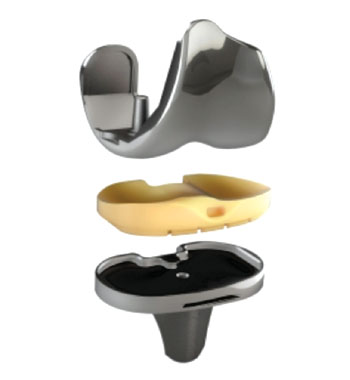Reconstructive Implant Restores Natural Knee Motion
By HospiMedica International staff writers
Posted on 23 Nov 2015
An innovative knee implant enables young and active patients to return to athletics and activities of daily living through the restoration of natural, healthy knee motion.Posted on 23 Nov 2015
The EMPOWR 3D Knee system is composed of ten asymmetric (left and right) femoral components (20 in total), five asymmetric e+ polyethylene insert thicknesses that are available in 10 sizes (100 total), and 21 asymmetric tibial baseplate (42 total). The combination of all three implant elements provides a comprehensive, anatomically diverse range of knee implant sizes, that when paired with precise and efficient instrumentation can recreate natural flexure throughout the entire range of motion.

Image: Femoral component, e+ polyethylene insert, and tibial baseplate of the EMPOWR 3D Knee system (Photo courtesy of DJO Global).
The conforming lateral compartment of the implant allows for lateral pivot during early flexion, replicating natural knee motion during gait. During mid flexion, the lateral compartment of the tibial insert is fully congruent with the femur up to 70 degrees; this, combined with the 8-mm anterior lip, provides the patient with anterior-posterior stability and prevents paradoxical motion during mid flexion.
During deep flexion, the articulation of the EMPOWR 3D Knee becomes less conforming, allowing the soft tissues to drive femoral rollback and natural medial pivot motion. The widened medial condyle encourages external rotation, similar to the natural knee, and aids in patellar tracking and quadriceps function during deep flexion. The EMPOWR 3D Knee system is a product of DJO Global (San Diego, CA, USA).
“The EMPOWR 3D Knee retains the proven articular surface design of the 3DKnee, which has been shown in over ten years of clinical and laboratory studies to provide patients with stability, durability, strength, and range of motion,” said professor of mechanical engineering Scott Banks, PhD, of the University of Florida (Gainesville, USA), co-designer of the 3DKnee. “The new EMPOWR 3D Knee design retains all these functional benefits in a system that is designed to optimally fit patients’ anatomy while giving surgeons more intraoperative flexibility and efficiency.”
Related Links:
DJO Global














